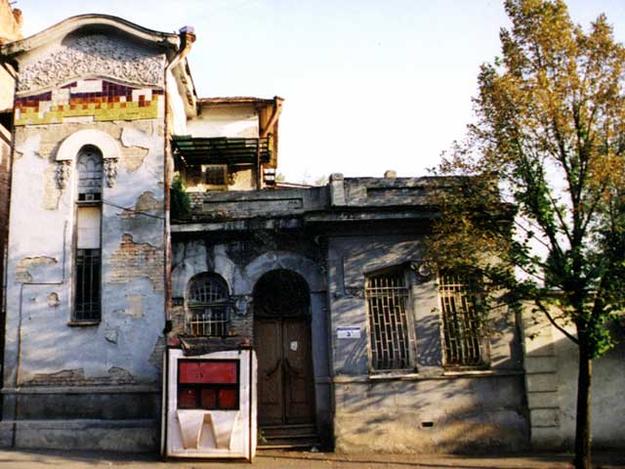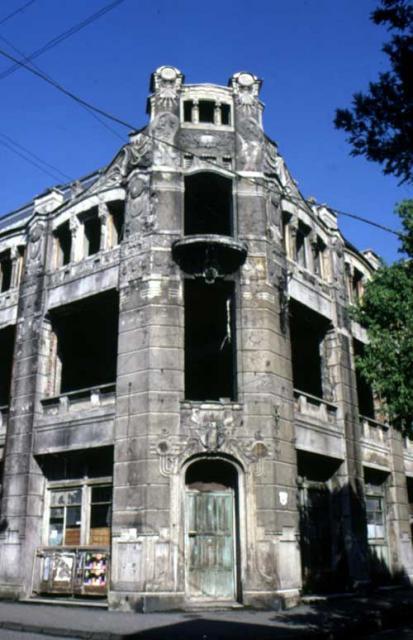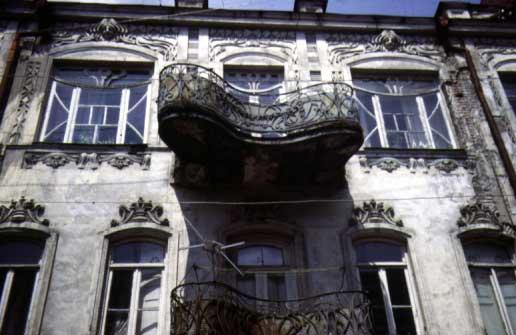Art Nouveau Buildings
2002 World Monuments Watch
Georgia is renowned for its ancient monuments but a more recent layer of history is reflected in its towns’ marvelous array of Art Nouveau buildings – houses, schools, workshops, cinemas, theaters, shops, banks, and hospitals – all done in the international style of the turn of the nineteenth century. These buildings, embellished with mosaic and stained glass, embody the paradox of Art Nouveau: its ahistorical, international character on the one hand and the ease with which it became a medium for a fresh visual language in which to express regional handicraft traditions. In Georgia, Western European-style Art Nouveau façades often conceal back courtyards with traditional Georgian timber balconies carved with Art Nouveau motifs. During the Soviet period, Art Nouveau was ignored as a style of bourgeois culture. Neglect, along with air and water pollution, has caused decorative plasterwork and mosaics to fall away. After the Revolution of 1917, these privately owned buildings were turned to incompatible collective uses, often destroying their interior decorative schemes. Unfortunately, local interest in these magnificent buildings is as nonexistent under new private investment and speculation as it was under the Soviet regime. The Georgian Art Nouveau Preservation Pressure Group is a dedicated local group fighting mass indifference, and hopes to provide the advocacy needed to stimulate investment in conservation.
Since the Watch
Protection of Art Nouveau architecture in Georgia has remained a concern. In Tbilisi, many buildings were damaged in an April 2002 earthquake, but this did not hinder the nominator, the Georgian Art Nouveau Preservation Pressure Group, from playing a very active role in continuing advocacy efforts. In addition to media coverage, the group mounted an international traveling photography exhibition titled Art Nouveau in Tbilisi. The city was also included in the Art Nouveau European Route, a Barcelona-based network of European cities and institutions with an interest in promoting Art Nouveau heritage. The group has produced a guidebook with maps and routes highlighting Art Nouveau architecture in Tbilisi, which is now in its second edition (2008). January 2011



